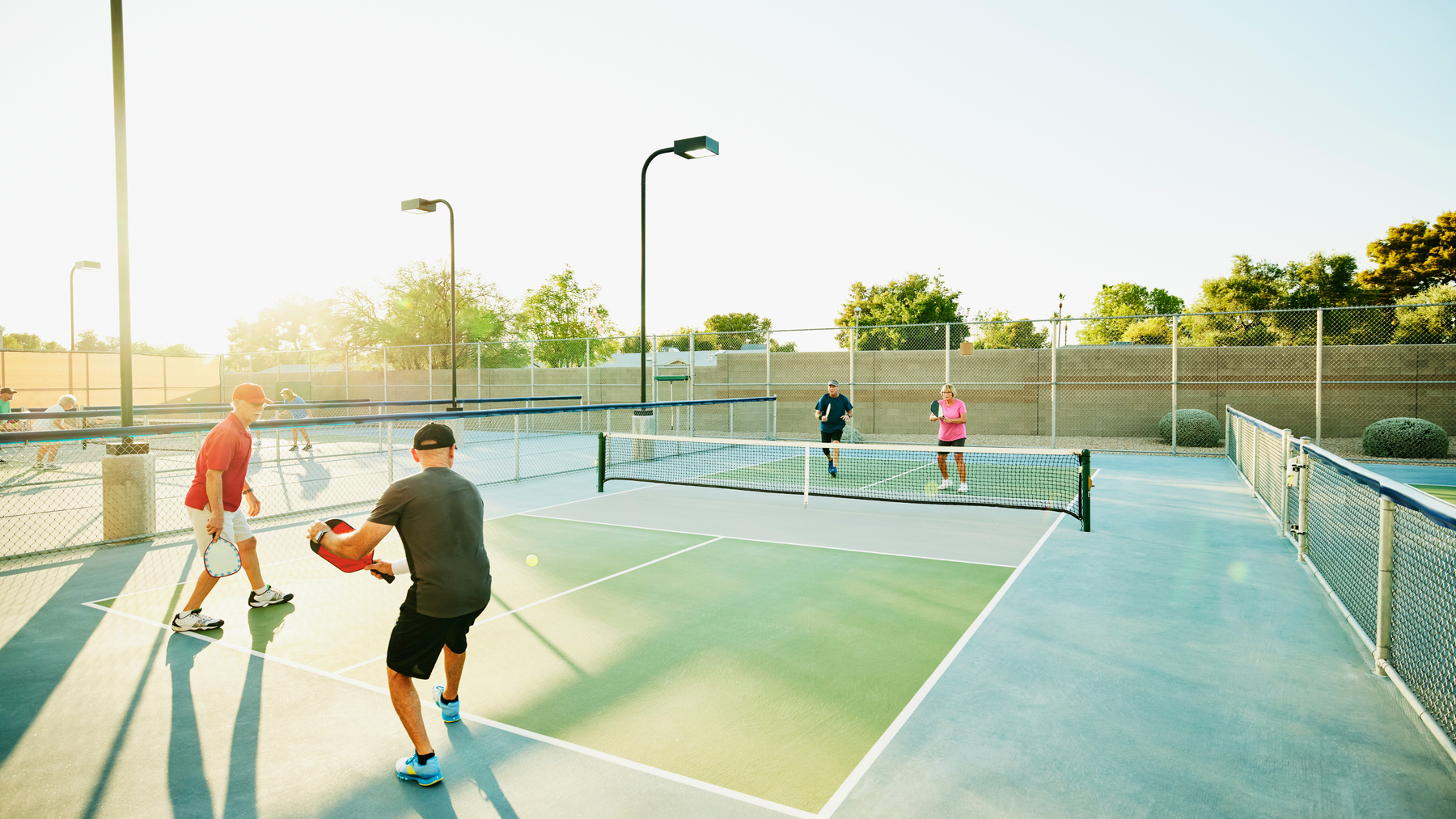
Strategies and Tips for Doubles Play in Pickleball
Playing doubles in pickleball is not just about having two players on each side of the net; it's an intricate dance of strategy, communication, and skill. Whether you're a seasoned pro or just picking up a paddle, the following strategies and tips can elevate your doubles game.
Table of Contents
1. Introduction to Doubles Pickleball
Doubles pickleball is a fast-growing sport that combines elements of tennis, badminton, and table tennis. Two teams of two players each face off on a court with specific rules and strategies that differ from singles play. Mastering the art of doubles requires not only individual skill but also a deep understanding of teamwork and strategy.
2. Effective Positioning
- Serve and Stay Alert: The serving player should start behind the baseline and move forward after the serve, mindful of the double bounce rule. The receiver should be ready to advance from the baseline to return shorter serves.
- Net Play: After the serve return, both players should move toward the non-volley zone (NVZ) line, aiming to get there in sync to prepare for the next return. If a lob forces you back, return to the NVZ as soon as possible.
- Unison Movement: Partners should move together as if tethered by a string, maintaining a balance to prevent creating gaps for opponents to exploit.
3. Communication Is Key
- Verbal and Nonverbal Cues: Call shots, especially in the middle of the court, to avoid confusion. Discuss who takes the middle shots, generally favoring the forehand, before the game starts.
- Praise and Strategy: Compliment your partner's good plays and never criticize mistakes. Discuss which opponent to target and who will handle lobs and middle shots.
4. Shot Selection
- Serve Accuracy: Always aim for 100% accuracy on serves before attempting more aggressive placements.
- Targeting: Choose who to return the ball to based on their aggressiveness and position—keeping a threatening player at the back can be advantageous.
- Placement Over Power: Focus on placing the ball in difficult positions for your opponents rather than hitting with sheer force.
5. Advanced Tactics
- Shake ‘n Bake: One player drives the return (shake) while the other anticipates a high return to smash (bake).
- Speed Ups: Use accelerated shots during dinking rallies to force errors or win the rally. Be prepared to initiate or counter speed ups effectively.
7. Mastering the Doubles Game
In doubles pickleball, the synergy between partners is as crucial as individual talent. By focusing on strategic positioning, clear communication, and smart shot selection, you can dominate the court. Remember, it’s not the most powerful players who win but the most cohesive teams. Incorporating these strategies into your game can lead to significant improvements and more victories on the court.
8. Frequently Asked Questions
-
What is the best position to be in when serving in doubles pickleball? The serving player should begin behind the baseline and remain alert to move forward after the serve to cover the court effectively.
-
How should you communicate with your partner during the game? Use clear verbal cues to call shots, especially in the middle of the court, and discuss strategic plays such as who will handle lobs and shots down the middle.
-
Why is shot placement more important than power in doubles? Shot placement can create difficult returns for your opponents and force errors, while power shots are riskier and can lead to unforced errors.
-
What is the 'Shake ‘n Bake' strategy in doubles pickleball? The 'Shake ‘n Bake' involves one player driving the ball (shake) and the other preparing to smash any high returns (bake), which can quickly earn points and build momentum.
-
How can you use speed ups to your advantage in doubles? Accelerated shots can force errors or end rallies when used strategically. Teams should plan when to initiate or counter speed ups and execute them with precision.
-
What should we do if both players go for the same ball? It’s crucial to decide before the game which player will take middle shots, typically the one with the forehand in the center. Use clear communication during play to avoid confusion.
-
How do we decide who returns the serve? The strategy should be discussed before the game. Typically, the player with a stronger or more strategic position should return the serve, considering the opponents' weaknesses.

